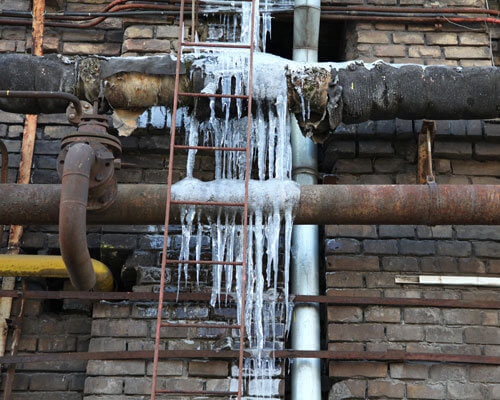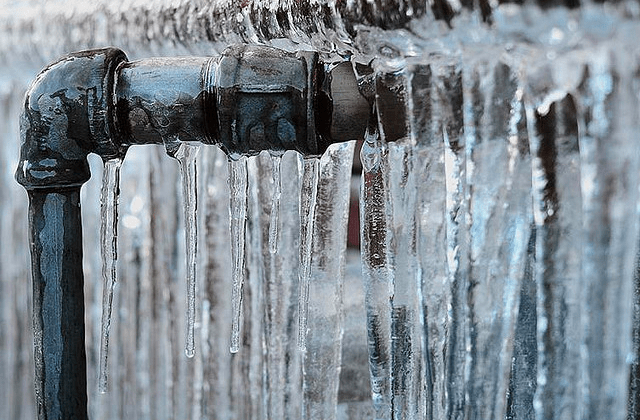Prevent Frozen Plumbing in Cold Weather: Professional Tips
Prevent Frozen Plumbing in Cold Weather: Professional Tips
Blog Article
On this page on the next paragraphs you'll find some incredibly good material pertaining to How To Avoid Freezing Pipes.

Cold weather can wreak havoc on your pipes, especially by freezing pipelines. Here's exactly how to prevent it from taking place and what to do if it does.
Introduction
As temperature levels drop, the threat of frozen pipes rises, possibly resulting in pricey repair work and water damages. Understanding how to avoid icy pipelines is important for home owners in cold environments.
Avoidance Tips
Insulating susceptible pipes
Wrap pipes in insulation sleeves or use heat tape to protect them from freezing temperatures. Concentrate on pipelines in unheated or exterior locations of the home.
Home heating methods
Keep indoor areas appropriately heated up, especially locations with plumbing. Open up closet doors to allow cozy air to distribute around pipes under sinks.
Exactly how to identify icy pipes
Try to find decreased water circulation from taps, unusual odors or sounds from pipes, and noticeable frost on revealed pipes.
Long-Term Solutions
Architectural adjustments
Think about rerouting pipelines far from exterior wall surfaces or unheated areas. Include extra insulation to attics, cellars, and crawl spaces.
Updating insulation
Buy high-quality insulation for pipes, attics, and wall surfaces. Correct insulation aids preserve constant temperatures and decreases the danger of frozen pipes.
Safeguarding Exterior Plumbing
Yard hoses and outside taps
Separate and drain garden hoses prior to winter. Mount frost-proof faucets or cover outside faucets with protected caps.
Comprehending Frozen Pipelines
What triggers pipes to ice up?
Pipelines freeze when subjected to temperatures listed below 32 ° F (0 ° C) for extended durations. As water inside the pipelines freezes, it broadens, putting pressure on the pipeline wall surfaces and potentially creating them to burst.
Dangers and problems
Frozen pipelines can cause water supply interruptions, home damages, and expensive repair work. Ruptured pipelines can flood homes and cause substantial architectural damages.
Indicators of Frozen Pipes
Identifying icy pipelines early can stop them from breaking.
What to Do If Your Pipelines Freeze
Immediate activities to take
If you presume icy pipes, keep faucets open up to relieve stress as the ice thaws. Utilize a hairdryer or towels soaked in hot water to thaw pipes gradually.
Final thought
Stopping icy pipes requires aggressive actions and fast feedbacks. By comprehending the reasons, indicators, and safety nets, home owners can shield their pipes during cold weather.
6 Proven Ways to Prevent Frozen Pipes and Protect Your Home
Disconnect and Drain Garden Hoses
Before winter arrives, start by disconnecting your garden hoses and draining any remaining water. Close the shut-off valves that supply outdoor hose bibs and leave the outdoor faucet open to allow any residual water to drain. For extra protection, consider using faucet covers throughout the colder months. It’s also important to drain water from any sprinkler supply lines following the manufacturer’s directions.
Insulate Exposed Pipes
Insulating your pipes is an effective way to prevent freezing. Pipe insulation is readily available at home improvement stores and is relatively inexpensive. Pay close attention to pipes in unheated areas such as the attic, basement, crawl spaces, or garage. Apply foam insulation generously to create a buffer against the cold. You can also wrap your pipes in heat tape or thermostat-controlled heat cables for added warmth.
Seal Air Leaks
Inspect your home for any cracks or openings that could let in cold air. Seal any holes around the piping in interior or exterior walls, as well as the sill plates where your home rests on its foundation. Additionally, make sure to keep your garage door closed unless you’re entering or exiting. Leaving it open creates a significant air leak that can lead to frozen pipes.
Allow Warm Air Circulation
During cold snaps, it’s essential to allow warm air to circulate evenly throughout your home. Leave interior doors ajar to promote better airflow. Open kitchen and bathroom cabinets to help distribute heat consistently around the rooms. If you have small children or pets, be sure to remove any household chemicals or potentially harmful cleaners from open cabinets for safety.
Let Faucets Drip
A small trickle of water can make a big difference in preventing ice formation inside your pipes. When temperatures drop significantly, start a drip of water from all faucets served by exposed pipes. This continuous flow helps prevent the water from freezing. Additionally, running a few faucets slightly can relieve pressure inside the pipes, reducing the chances of a rupture if the water inside does freeze.
https://choateshvac.com/6-proven-ways-to-prevent-frozen-pipes-and-protect-your-home/

Do you enjoy more info about How to prepare your home plumbing for winter weather? Give feedback directly below. We will be delighted to find out your ideas about this blog posting. In hopes that you come back again later on. Those who liked our page kindly don't forget to share it. Thank you for taking the time to read it.
Recurring Service Plans Report this page